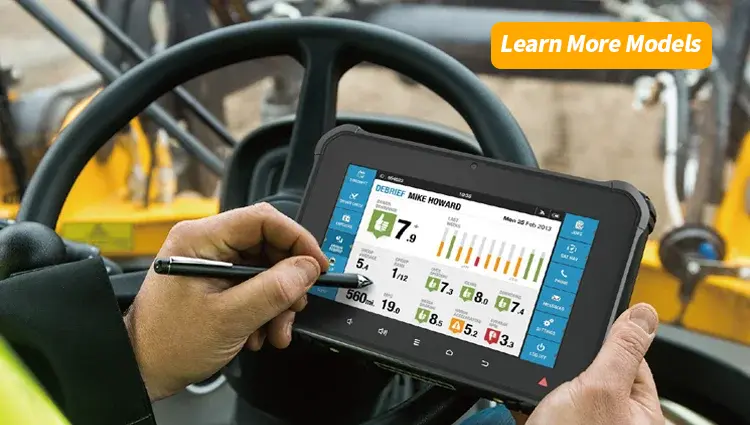CAN, RS485, ACC Input… Why These Interfaces Matter in Vehicle Tablets?
In the world of in-vehicle computing, performance is often measured by CPU speed, RAM capacity, or display brightness. Yet for system integrators and fleet solution providers, the true value of a rugged tablet lies in something less visible — its interfaces.
Beyond Processing Power: The Language of Connectivity
Every vehicle speaks a language of data — from engine diagnostics and driver behavior to GPS positioning and sensor feedback. To understand and interact with this data, rugged tablets must connect through the right communication channels.
That’s where CAN bus, RS485, and ACC input come in. These interfaces allow tablets to not only display information, but to participate in the vehicle’s ecosystem — enabling intelligent decision-making at the edge.

CAN Bus: The Backbone of Vehicle Intelligence
The Controller Area Network (CAN) bus is the standard protocol for vehicle communication, particularly in heavy-duty and commercial fleets.
- SAE J1939 / ISO 15765 support ensures compatibility with ECM (Engine Control Module) systems.
- Tablets equipped with CAN interfaces can monitor parameters like RPM, fuel rate, and fault codes in real time.
- This allows integrators to create smarter applications for driver coaching, predictive maintenance, and fuel optimization.
RS485: Reliable Data Flow in Complex Environments
For industrial or specialty vehicles (e.g., forklifts, mining trucks, and buses), RS485 provides a stable and noise-resistant communication link.
It enables multiple peripheral devices — such as sensors, GPS modules, or video systems — to communicate over long distances with minimal interference. That means your rugged tablet can serve as the central hub for data collection and processing, even in harsh conditions.
ACC Input: Smarter Power Control for Vehicle Integration
The ACC (Accessory) input helps the tablet synchronize power-on and power-off cycles with the vehicle’s ignition. This ensures:
- Smooth startup and shutdown aligned with the vehicle engine
- Prevention of data corruption or battery drain
- Simplified integration into vehicle electrical systems
- For fleet integrators, this small detail translates into longer device lifespan and lower maintenance cost.

Designed for Integrators — Built for the Real World
At WAYSION, we believe that a rugged tablet should do more than withstand shock or vibration — it should communicate seamlessly with the systems around it.
That’s why our in-vehicle tablets, such as the V7S, Q777, and DT8, are engineered with rich I/O interfaces and open architecture design to empower:
- CAN bus data visualization
- Multi-camera connectivity (AHD/IP)
- Real-time telematics and MDM integration
- Software-defined customization for fleet applications
Whether you’re developing solutions for logistics, mining, or public transportation, WAYSION provides the hardware foundation to make system integration smoother and smarter. Choosing a rugged tablet isn’t just about hardware specs — it’s about compatibility, control, and communication. Interfaces like CAN, RS485, and ACC input may not make headlines, but they make integration possible — and success scalable.

More Waysion Rugged Solutions pls visitor www.waysion.com








